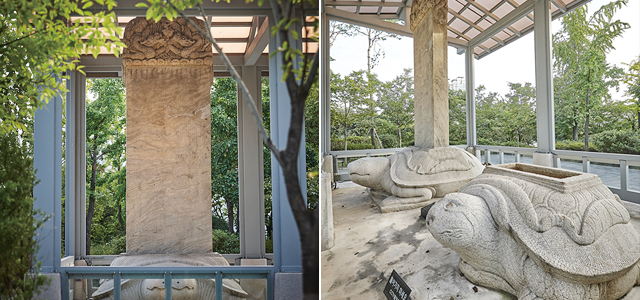Samjeondo Mounment
- Era17th year under the reign of King Injo of Joseon (1639)
- StatusHistoric Site No. 101 (Jan. 21, 1963)
- Location136, Samhaksa-ro (47, Jamsil-dong)
- Total area
- 200.09 ㎡
- Size
- Height: 5.7 m (3.95 m without the pedestal)
- width: 1.4m/ made with marble

The monument was erected under pressure from the Qing Dynasty after Joseon was defeated in the Manchu War from 1633 to 1639 (17th year under the reign of King Injo) and forcibly signed the peace treaty. The original name of the monument was "Samjeondo Cheongtaejong Gongdeokbi". Minister of Personnel Yi Gyeong-seok created the inscription and the calligraphic work was done by O Jun. The name of the monument was written by Yeo I-jing. The monument measures 5.7 meters (3.95 meters without the pedestal) in height, 1.4 meters in width and weighs 32 tons.
The inscription describes why the Qing Dynasty invaded Joseon and insists that the Qing army returned to their country without harming Joseon people after their king surrendered. The inscription was inscribed in the characters of three countries. On one side of the monument, the inscription is in Chinese characters while the other side shows the inscription in Manchurian and Mongolian.
The monument was initially erected near Seokchon Lake. But in 1895 (the 32nd year under the reign of King Gojong), it was buried in the ground as the king found the inscription humiliating to Joseon. In 1913, under Japanese control, the monument was re-erected. After independence, in 1956, the Ministry of Education buried the monument again in the ground, considering it "a symbol of a national disgrace." It was not until 1963 that the monument saw light again. In April 2010, the monument was put back in its original place, Seoho Hill near Seokchon Lake, after being restored.